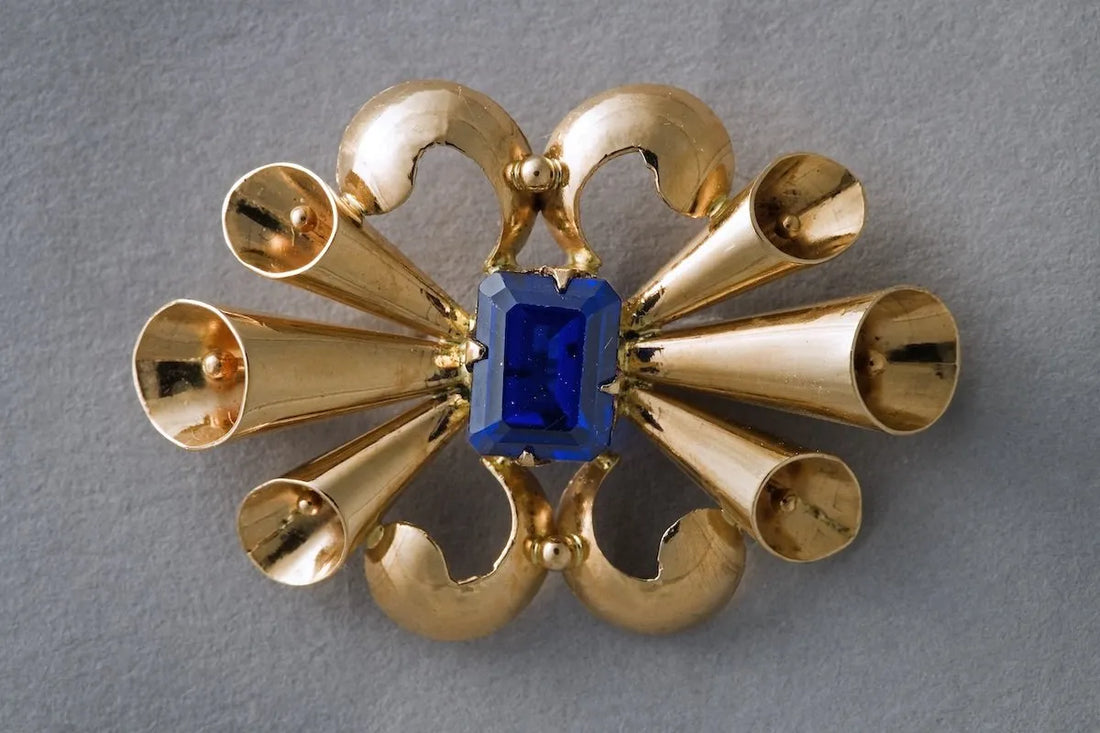
Missing Gaps in Gemmological Terminology?
Share
Flame Fusion Synthetic Spinel
One of the most popular artificial products that gemmologists learn how to identify during their education is the flame fusion, or Verneuil, synthetic spinel. These have been around for almost a century and were produced in many colours (except red) to imitate, not natural spinel, but rather other gem materials such as the diamond, aquamarine or blue sapphire just to name a few (O’Donoghue, 2005). All the gem and jewellery community and almost all the literature simply describe these products as “synthetic spinel” (O’Donoghue, 2006, Matlins, 2003, Liddicoat, 1993, Hodgkinson, 2015).
 In the photo. Mid-20th century gold brooch, made in northern Portugal, set with a flame fusion synthetic spinel © Carlos Pombo Monteiro, Fundação Eugénio de Almeida/Arquidiocese de Évora
In the photo. Mid-20th century gold brooch, made in northern Portugal, set with a flame fusion synthetic spinel © Carlos Pombo Monteiro, Fundação Eugénio de Almeida/Arquidiocese de Évora
The trade, however, has a very strict definition “synthetic” and CIBJO - The World Jewellery Confederation defines a synthetic stones as “artificial products having essentially the same chemical composition, physical properties and structure as that of their naturally occurring counterparts ” (CIBJO Gemstone Book, 2018). It happens that every gemmologist knows that the gemmological properties of natural spinel differ slightly from the properties of the flame fusion counterpart, much to the fact that they do not have the same chemical composition, with a different alumina to magnesia ratio (Al2O3 / MgO), that is 1-1 in natural spinel and usually 3.6-1 in the flame fusion product (Rinaudo, 1997). In strict observation of the CIBJO rules, we could not call these products as “synthetic spinels” as these do not meet the criteria for a synthetic stone. This is, however, a typical case when a verbal or written tradition overtakes the formality of a nomenclature rule. Despite the non-compliance with the trade standards, it is widely accepted and tolerated that these products can be named, tagged and traded as “synthetic spinel”.

© Carlos Pombo Monteiro, Fundação Eugénio de Almeida/Arquidiocese de Évora



